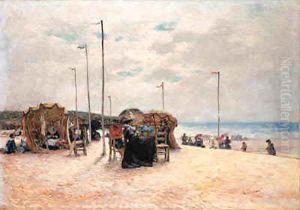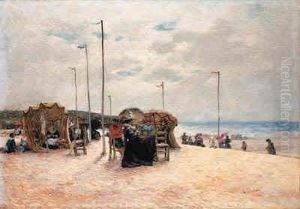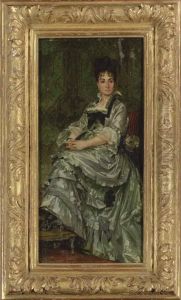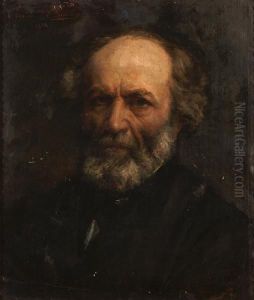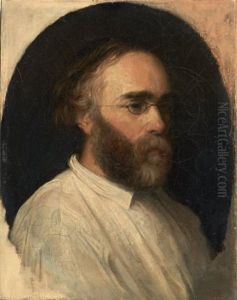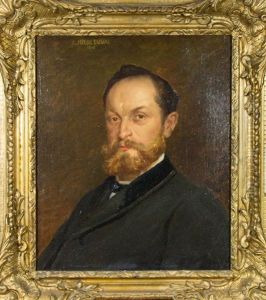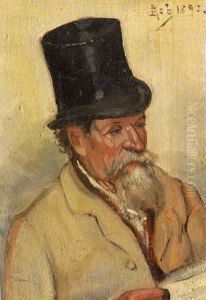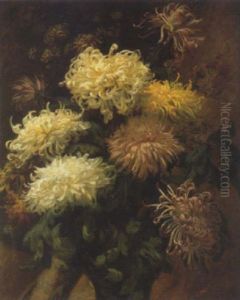Felix Armand Marie Jobbe-Duval Paintings
Félix Armand Marie Jobbé-Duval was a French painter, illustrator, and decorative artist born on April 24, 1821, in Rennes, Brittany. He was part of the Brittany artistic movement and is known for his contributions to religious art, as well as his involvement in the revival of Breton culture during the 19th century.
Jobbé-Duval was born into a family with noble lineage, and his interest in art began at an early age. He studied at the École des Beaux-Arts in Paris, where he was influenced by the Romantic movement. His early work was characterized by historical and religious themes, and he was particularly interested in medieval art and symbolism, which later fed into his involvement with the Breton cultural renaissance.
Throughout his career, Jobbé-Duval painted a number of religious works for churches and other institutions, including murals and altarpieces. He also created designs for stained glass windows, which were produced by some of the leading glassmakers of the time. His work in this area contributed to the revival of the medium in France during the 19th century.
In addition to his religious art, Jobbé-Duval also illustrated several books and produced lithographs. His illustrations often featured Breton landscapes and scenes from Breton folklore, reflecting his deep connection to his native region. He was part of a wider movement of artists and writers who sought to celebrate and preserve Brittany's unique cultural heritage, which was seen as being at risk due to the rapid modernization and centralization policies of the French state.
Jobbé-Duval was also involved in the political and cultural life of Brittany. He was a member of the Breton Association, which promoted the region's autonomy and the preservation of its customs and language. His art and advocacy played a significant role in the development of a distinct Breton identity during a period of intense national consolidation in France.
Félix Armand Marie Jobbé-Duval passed away on April 19, 1889, in Paris. His legacy is preserved in the continued appreciation of Breton culture and in the works he contributed to the region's religious and cultural institutions. His dedication to the artistic and cultural traditions of Brittany marked him as a significant figure in the 19th-century movement to recognize and value regional diversity within France.
